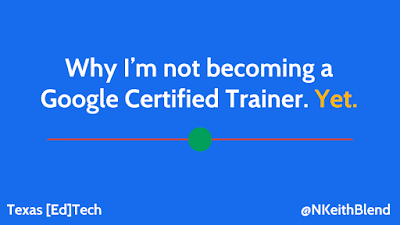For the past 11 years, my first day of school has been full of nervous anticipation, the kind that comes with any event that has a mix of the known and unknown. My room would be prepped, lessons planned, introductory activities ready, and I'd be standing at my door ready to greet a group of students shaking off the grogginess of their summer break.
But I serve children differently now.
To kick off year 12, I welcomed students outside one of our elementary schools (which I loved) while wearing a suit in 93% humidity (which I did not love), then headed to our technology building. I spent the next three days running the cables for chargers in 15 Spectrum Cloud32 Chromebook Carts.
I serve children differently now.
As a follow up, I worked with my partner to enroll almost 400 Chromebooks, then created a timeline of the next month to get all our 1:1 devices out on time. We had committee meetings about what paperwork is necessary to comply with the legalities of COPPA and FERPA, took a conference call with the folks at Amplified IT to make sure we'll have all our GAFE accounts and OUs created by September 8th, then stopped by a few classrooms to install drivers and software for our new Dell S520 interactive projectors.
I serve children differently now.
It's been strange not having my own students anymore, and there's a part of me that misses it. But I'm realizing that even though my name may not be on their schedule, I'm still making an imprint on their future.
If I can provide devices, coach teachers, model lessons, lead engaging PD, be a sounding board for my pilot program pioneers, offer creative ideas for integration, and quickly fix minor tech issues so there's no instructional downtime, then I'm providing a layer of support that will directly impact our students.
So I serve children differently now. And I'm becoming okay with that.
But I'm also okay with the fact that I'll be on campuses this week. Because honestly, that's where all the action really is...









